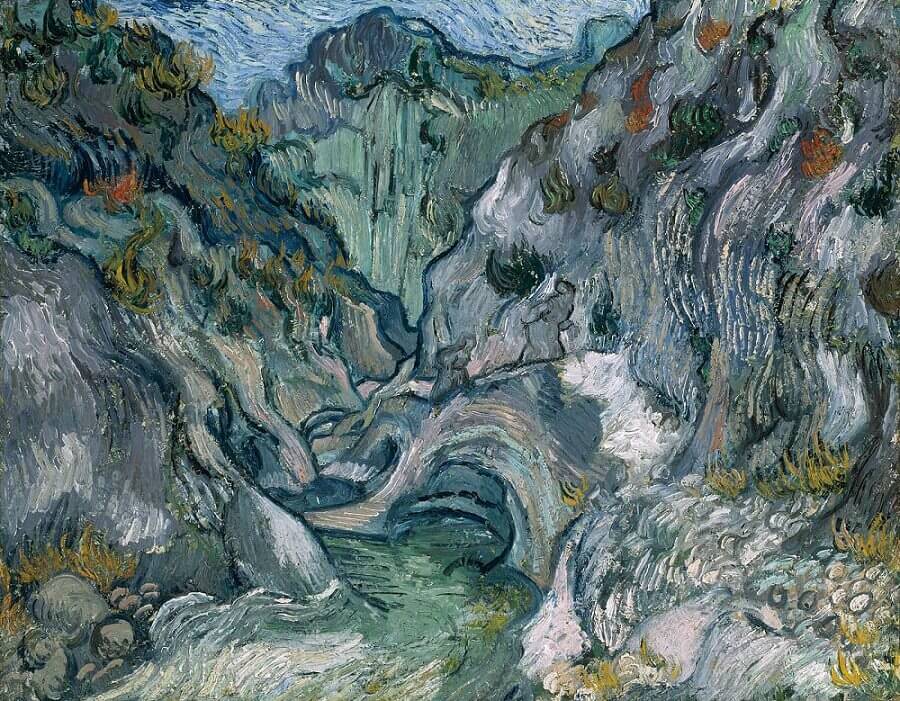The Ravine, 1889 by Vincent van Gogh

In June 1889, shortly after his arrival at an asylum in the southern French town of Saint-Rémy, van Gogh painted a riotous study of a flowering hillside. He sent a pen-and-ink copy of the painting to his brother in early July. Months later, in October, the artist found himself without fresh canvas on which to paint and decided to sacrifice the study of wild vegetation to paint this view of the mountainous ravine near the asylum.
Recent collaborative research by conservators and curators has revealed the presence of the lost painting beneath The Ravine by x-rays examining of the painting. The underlying composition was most likely Wild Vegetation, painted in June 1889, during the early period of Van Gogh's stay at the asylum of Saint-Paul de Mausole near the Provençal town of Saint-Rémy, and was re-used as a support for Ravine a few months later, in October 1889.
Ravine - the masterpiece that now covers the earlier painting - is usually on view in the Museum of Fine Arts, Boston's Impressionist Gallery.




















